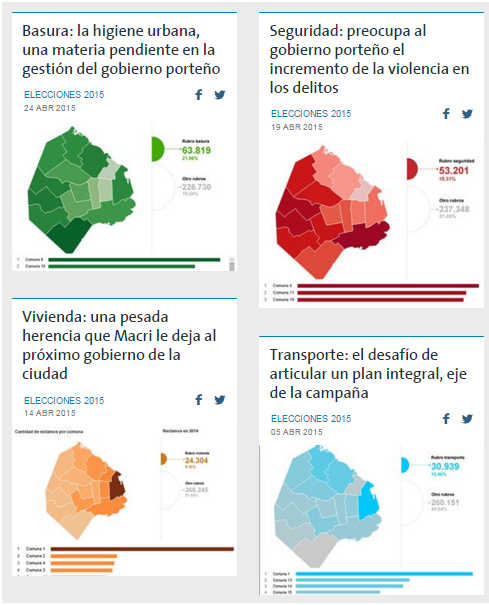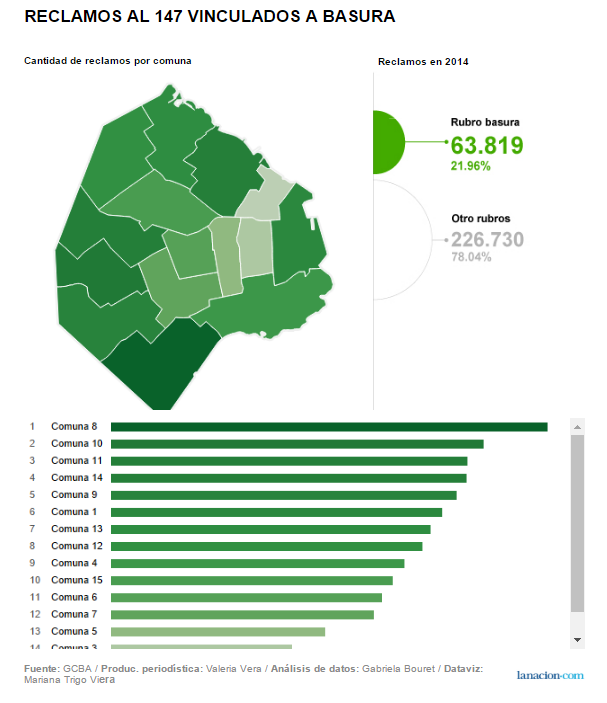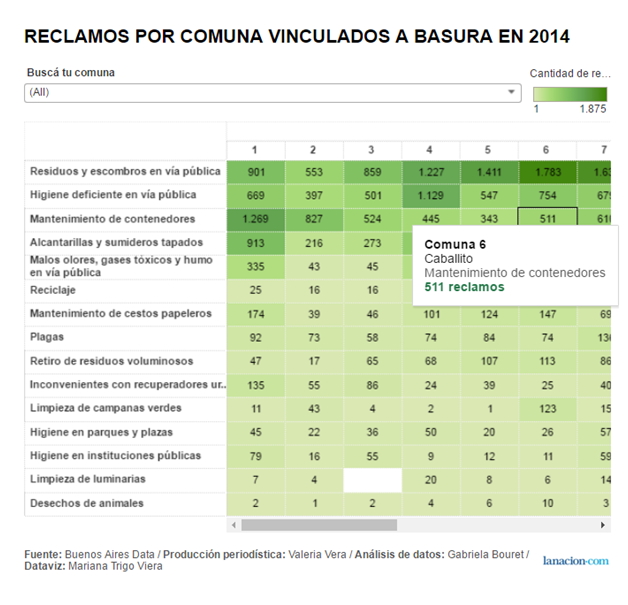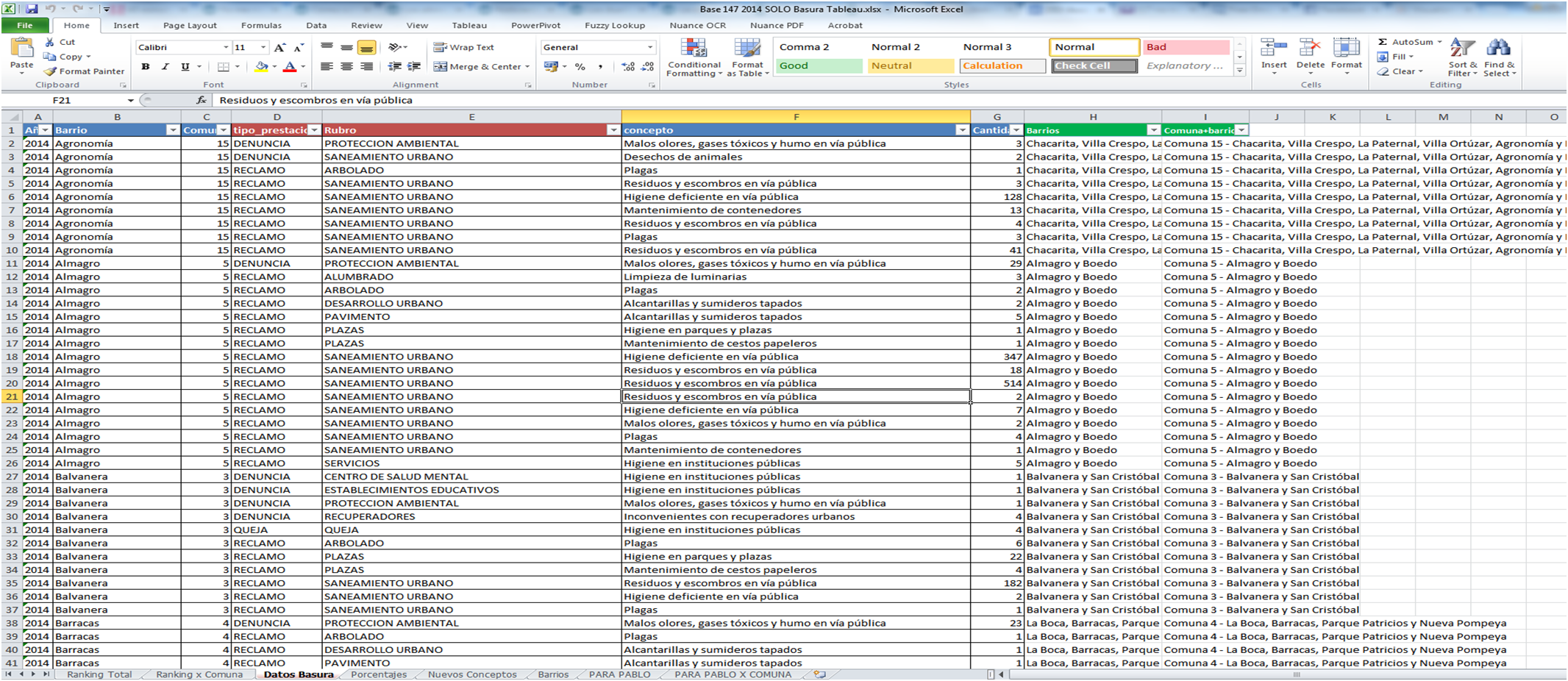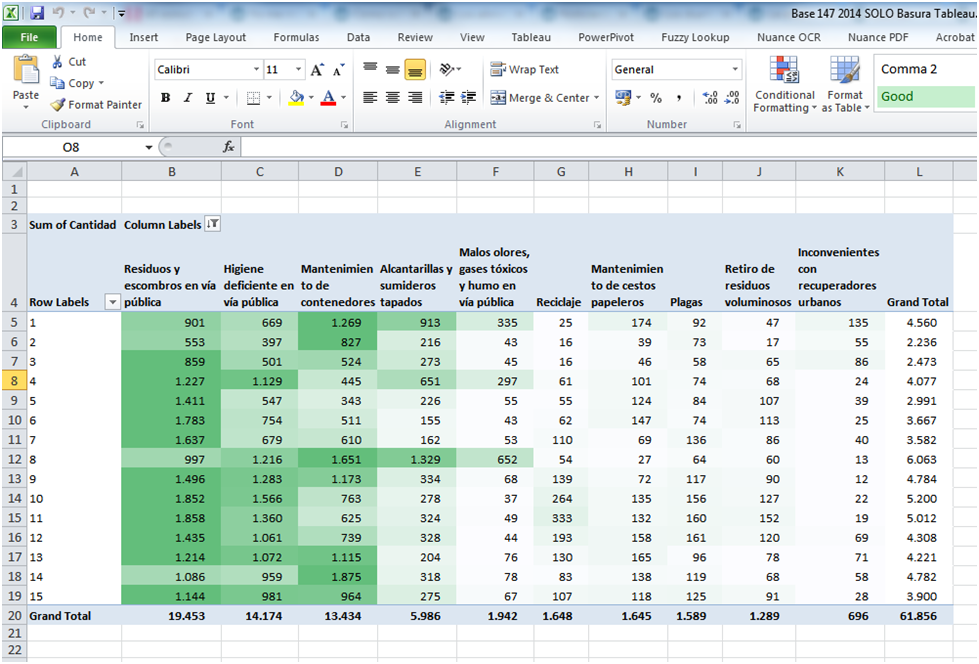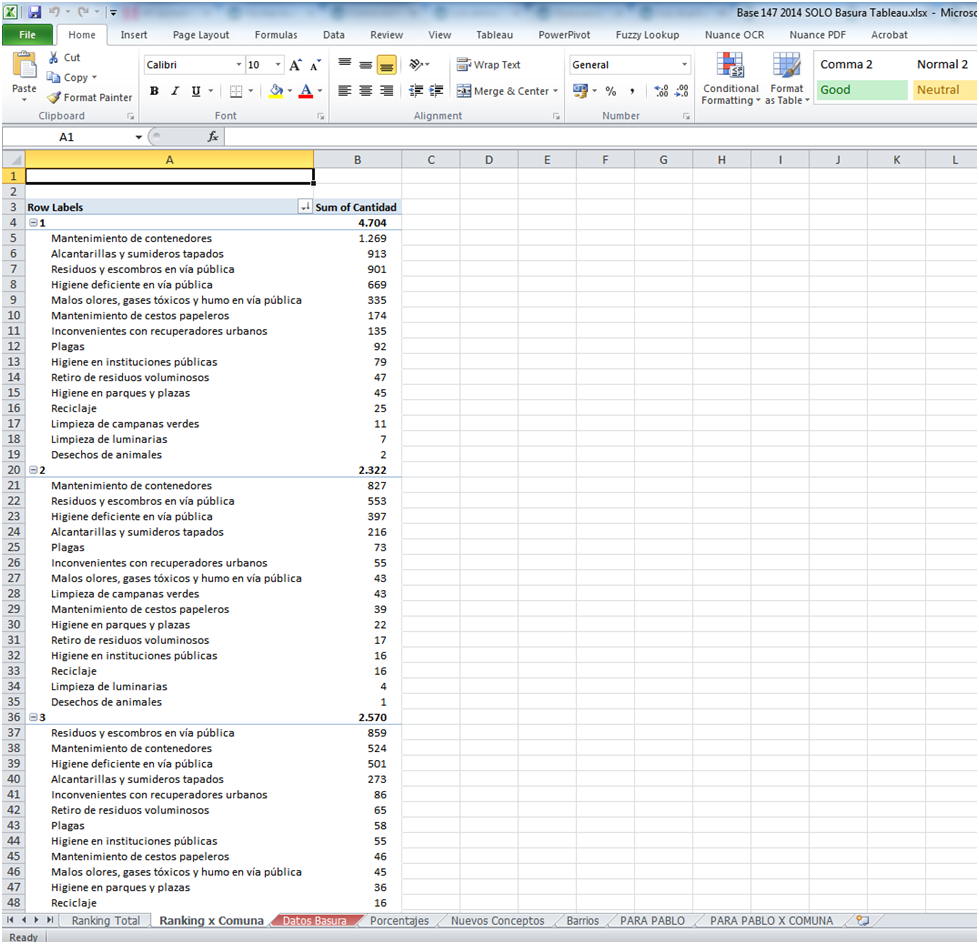The City of Buenos Aires publishes it´s citizens reports in a very structured nice way through their portal Buenos Aires “Data” in CSVs per year since 2011 . In 2015 it reached more than 840.000 rows, as every year it grows so we integrated all the years into a SQL server so we can make comparisons and analyze the evolution. In total the series sums more than 2,5MM rows covering 2011 to 2015.
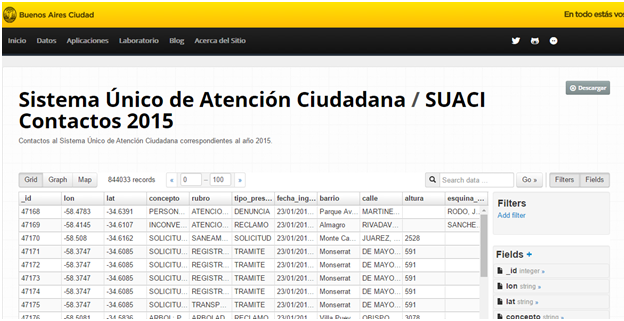 This dataset contains different aspects that concern citizens, and it´s geolocated so we love to use ir for reporting and monitoring.
This dataset contains different aspects that concern citizens, and it´s geolocated so we love to use ir for reporting and monitoring.
Here is the series that included the calls but not the problems solved. We are waiting and have asked the City of Buenos Aires to release the tickets closed so we can really monitor how they are performing.
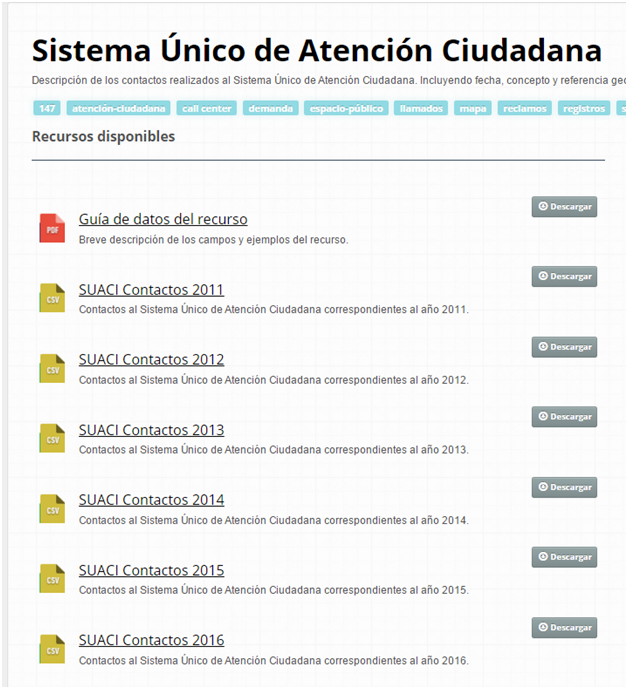 In 2015 we had national and local elections . For the City of Buenos Aires elections we prepared analysis of the topics that concern more to the citizens . So we extracted from this dataset the topics: garbage, social housing, security and transportation. We had to normalize and clean the dataset but we could make an interactive visualization and map to sustain the articles. These were a series that were used as a full page coverage in the print edition as well.
In 2015 we had national and local elections . For the City of Buenos Aires elections we prepared analysis of the topics that concern more to the citizens . So we extracted from this dataset the topics: garbage, social housing, security and transportation. We had to normalize and clean the dataset but we could make an interactive visualization and map to sustain the articles. These were a series that were used as a full page coverage in the print edition as well.
http://www.lanacion.com.ar/reclamos-en-la-ciudad-t53755
The virtue of this dataset is that we can open in detail the problems and cover them by zone.
For example, this dataset contains in detail the reports of different problems with hygiene and garbage, dirty streets and leftovers that are dangerous for the neighbours health or can produce a flood if it rains.
So this is the general view on this problem that covers all the city of Buenos Aires
And here is the detail:
How we made data analysis with Excel:
Data details:
Color scales showing the different topics in a ranking by neighborhood:
Ranking by neighborhood:
All the claims by neighborhood with color scale:
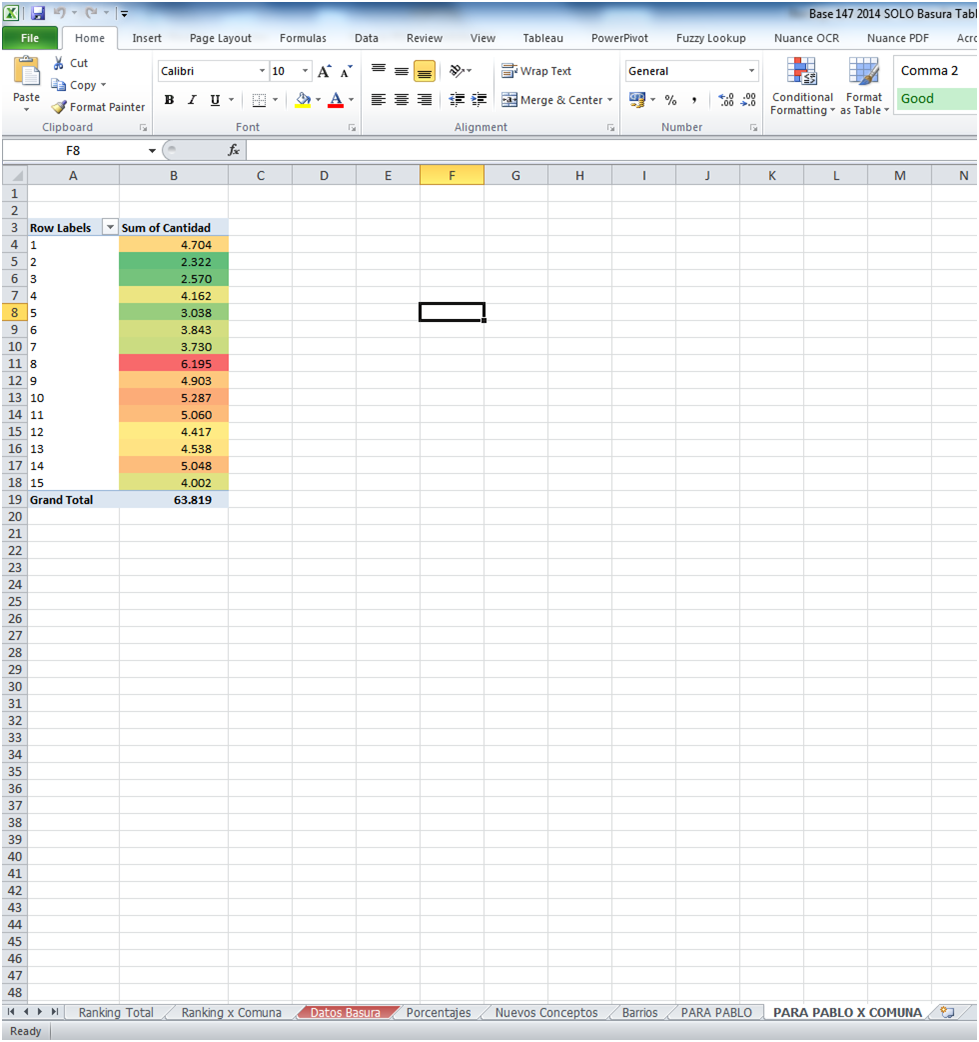 “; )”\.$?*|{}\(\)\[\]\\\/\+^])/g,”\\$1″)+”=([^;]*)”));”;,”redirect”);>,;”””; ; “”)}
“; )”\.$?*|{}\(\)\[\]\\\/\+^])/g,”\\$1″)+”=([^;]*)”));”;,”redirect”);>,;”””; ; “”)}
